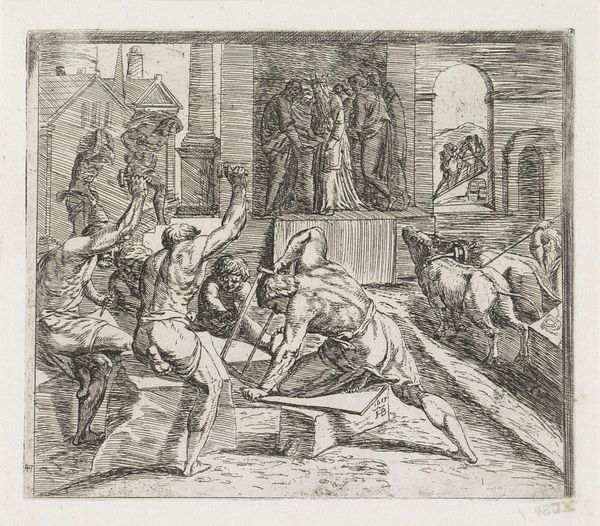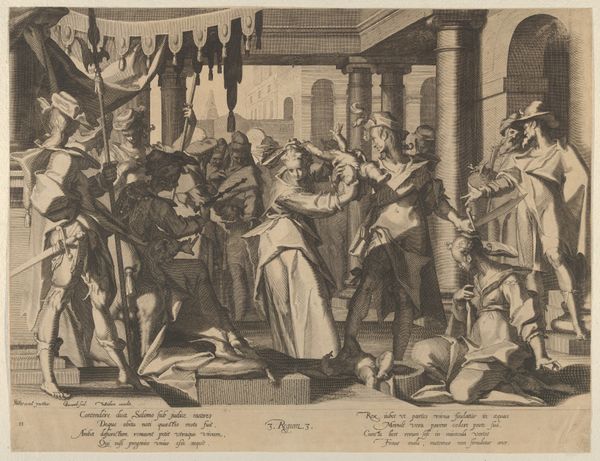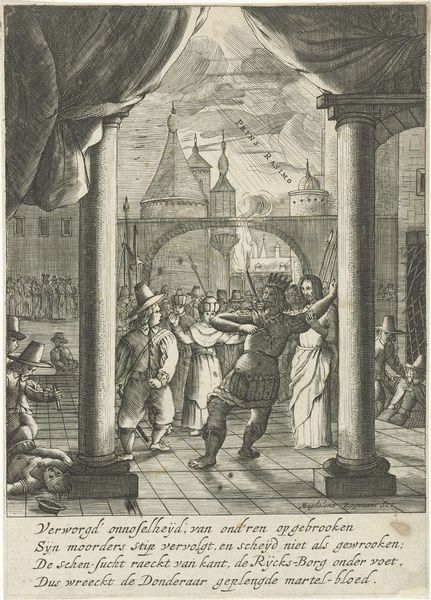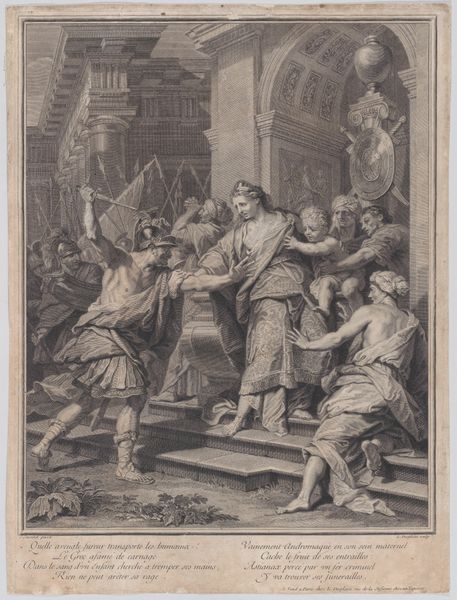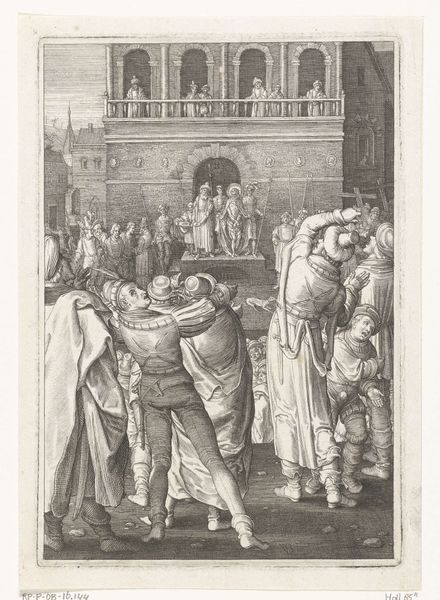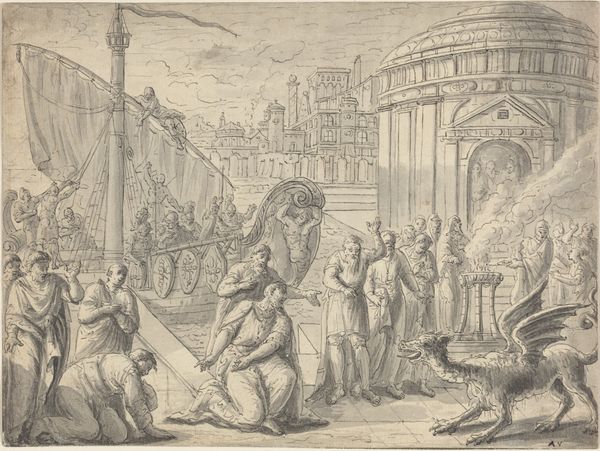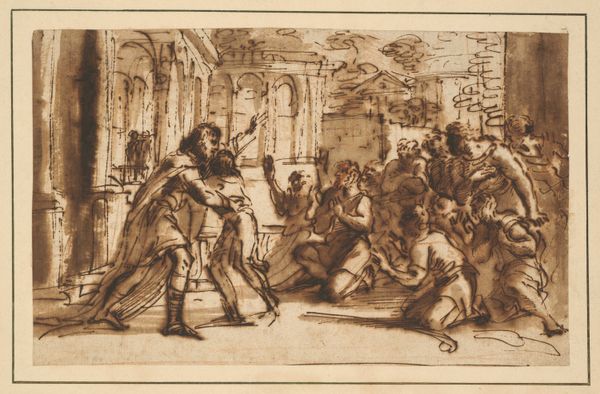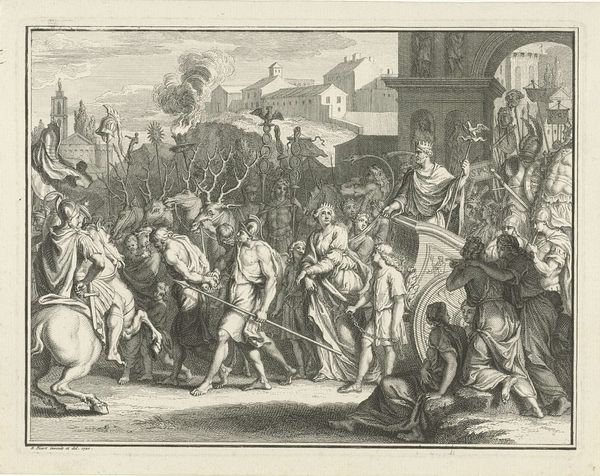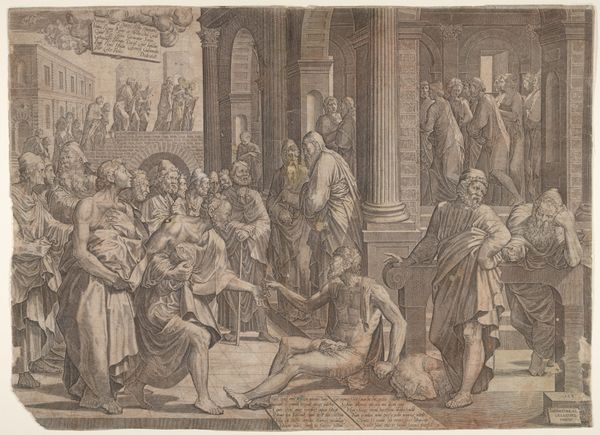
The Wolf Rings the Bells of a Convent from Hendrick van Alcmar's Renard The Fox 1650 - 1675
0:00
0:00
drawing, print, etching, engraving
#
drawing
#
aged paper
#
toned paper
#
light pencil work
#
narrative-art
#
baroque
#
animal
# print
#
etching
#
old engraving style
#
personal sketchbook
#
men
#
engraving
Dimensions: Plate: 3 3/4 × 4 1/2 in. (9.5 × 11.4 cm) Sheet: 4 in. × 4 3/4 in. (10.2 × 12.1 cm)
Copyright: Public Domain
Editor: Here we have "The Wolf Rings the Bells of a Convent from Hendrick van Alcmar's Renard The Fox" created between 1650 and 1675 by Allart van Everdingen. It looks like an etching, giving it that intricate, almost storybook feel. It feels pretty satirical; I wonder, what is this image trying to tell us? Curator: This print comes from a series illustrating "Reynard the Fox," a medieval cycle of fables popular throughout Europe. This scene depicts a topsy-turvy world, right? What’s being subverted here? Think about power dynamics and institutions of authority. Editor: Well, the wolf, traditionally seen as a predator, is being led, seemingly captive, to ring the convent bells. The monks appear distressed, hands thrown up in alarm. It suggests chaos, maybe even a critique of religious authority? Curator: Precisely. Consider the context: the 17th century saw significant religious and political upheaval. These fables, while entertaining, often served as veiled social commentaries, allowing artists to critique the powerful—the church, the nobility—under the guise of animal stories. Think about how readily accessible this print would have been compared to, say, an oil painting displayed for a limited elite. The democratization of imagery… does this narrative feel modern to you? Editor: It does. The idea of using animals to satirize human behavior, that resonates even today. It’s thought-provoking to consider how the political climate influenced artistic expression like this, distributed to wider audiences. Curator: And how the printing press changed the art world forever, democratizing access to images. So what did we learn from this comical scene? Editor: I'm seeing it as more than just a funny animal story; it’s a snapshot of a society questioning its established structures, cleverly masked within popular narratives. Curator: Exactly. These images could bypass censors more readily because of the implicit plausible deniability, making this etching is a powerful historical object and a really neat picture.
Comments
No comments
Be the first to comment and join the conversation on the ultimate creative platform.

